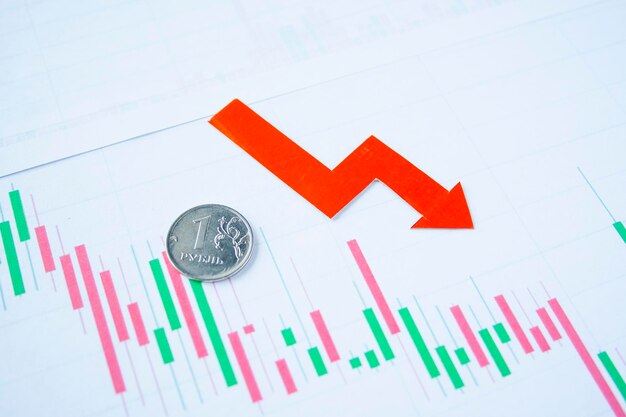**This article was generated with the assistance of AI. While efforts are made to provide accurate and helpful information, occasional errors or omissions may occur.
Understanding Economic Downturns: What Triggers a Recession?
Imagine waking up to news headlines screaming about plummeting stocks, skyrocketing unemployment rates, and nations grappling with economic stagnation. Recessions are daunting, painting bleak pictures across societies and impacting lives across the globe. But what exactly causes these economic downturns, and how can we make sense of the shifting tides within the economic landscape?
What Is a Recession?
A recession is commonly defined as a significant decline in economic activity lasting more than a few months. This is visible in real GDP, income, employment, industrial production, and wholesale-retail sales declines. In simpler terms, it’s when the economy takes a downturn, impacting livelihoods and future growth potential.
Historical Recessions: Learning from the Past
Before we dive into the causes, let’s briefly understand how recessions have shaped economies in the past:
- The Great Depression (1929-1939): Known as the most severe economic downturn, it led to vast unemployment and deflation.
- The Oil Crisis (1973-1975): Triggered by oil embargoes, this recession caused inflation and economic stagnation.
- The Global Financial Crisis (2007-2009): Marked by a collapse in financial institutions and severe market disruptions.
Understanding these events helps contextualize how recessions can unfold and the varied triggers they may have.
Identifying Key Causes of Recessions
Recessions can result from a confluence of economic factors, policy decisions, and unforeseen global events. Here’s a deeper look at the main causes:
1. Decline in Consumer Confidence
Consumer confidence drives spending decisions, and a drop can lead to a chain reaction of reduced demand for goods and services:
- Reduced Spending: When people worry about future economic stability, they save more instead of spending, leading to decreased business revenues.
- Prolonged Consequences: The drop in consumer demand forces businesses to cut costs, leading to layoffs and further reduction in spending—exacerbating economic decline.
2. Financial Market Instability
The unpredictability of financial markets can induce significant economic stress:
- Stock Market Declines: Sharp declines diminish household wealth, leading to unsupportive consumption levels.
- Bank Failures: Reduced lending capacity curtails investments and expenditures, further hampering economic growth.
3. High Interest Rates
Interest rates govern borrowing costs, impacting personal and business finance:
- Increased Borrowing Costs: High rates make loans expensive, discouraging consumer purchases on credit and business expansions.
- Delayed Investments: Companies may postpone or reduce investments, leading to slower economic activity.
4. Global Economic Shocks
External disruptions can ripple through multi-national economic fabric:
- Natural Disasters: Catastrophic events can halt production and distribution channels, affecting economic stability.
- Geopolitical Tensions: Conflicts and trade wars interrupt global supply chains and create uncertainty, impacting investment and growth.
5. Deflation or Inflationary Pressures
Deflation: Falling prices can lead to decreased production and increased unemployment due to reduced consumer spending.
Inflation: Conversely, when inflation rises too rapidly, it can erode purchasing power, slowing down the economy as industries struggle to adjust.
6. Business Cycle Dynamics
An economy fluctuates between periods of expansion (growth) and contraction (recession), known as the business cycle:
- Inevitability of Cycles: Recessions are often viewed as an inevitable phase in the business cycle, wherein corrections adjust over-exuberant growth.
- Mismanagement: Ineffective fiscal or monetary policy can either lengthen or deepen recession cycles.
Related Subtopics: Depth and Context
To fully appreciate the intricacies of recessions, it's essential to explore related subtopics that shed light on broader economic connections:
The Role of Government and Policy
Governments often play crucial roles in both triggering and mitigating recessions:
- Fiscal Policies: Taxation and government spending can counterbalance recessionary forces when used strategically.
- Monetary Policies: Central banks, through interest rate adjustments and quantitative easing, strive to maintain economic stability.
Technological Advancements
Innovation can be both a blessing and a challenge:
- Job Displacement: Automation and robotics can lead to unemployment, impacting consumer spending.
- Economic Transformation: New technologies can also open up new industries, compensating for jobs lost in traditional sectors.
Globalization and Trade
The interconnectedness of economies spreads recession risks across borders:
- Supply Chain Vulnerabilities: A disruption in one part of the world can impact the global economic system.
- Trade Policies: Protectionist measures can spur recessionary tendencies by reducing market access and globalization benefits.
Practical Takeaways and Consumer Tips
In the face of economic uncertainty, understanding how to navigate personal finance becomes crucial. Here are some actionable tips:
- 💡 Build an Emergency Fund: Aim to have six months’ worth of living expenses saved.
- 💡 Diversify Investments: Spread investments across various asset classes to mitigate risks.
- 💡 Focus on Skills Development: Upskilling can improve job security amidst potential market disruptions.
- 💡 Prioritize Necessary Expenses: Cut down on non-essential spending to maintain a healthy budget.
- 💡 Stay Informed: Regularly follow economic news to anticipate trends and plan accordingly.
Decoding the Economic Landscape: Concluding Thoughts
The complex tapestry of recession causes illustrates how various factors intertwine, impacting local and global economies. While some aspects of recessions are unavoidable due to cyclical dynamics, understanding their causes provides critical insights and empowers individuals, businesses, and governments to mitigate adverse outcomes effectively.
By recognizing the signs and comprehending the underlying triggers, stakeholders can foster resilience and adaptability, ensuring economic sustainability even in stormy weather. Embracing knowledge and proactivity remains crucial as global economies continue to evolve in an ever-connecting world.

Related Topics
- BRICS Explained
- Commodities Investing Basics
- CPI Vs PCE Inflation
- Emerging Markets Risks
- Exchange Rates Explained
- FOMC Meetings Explained
- Forex Trading For Beginners
- GDP Growth Rate Meaning
- Global Stock Market Indices
- Gold As An Inflation Hedge
- How Interest Rates Affect Economy
- Leading Economic Indicators
- Oil Prices What Affects Them
- Quantitative Easing Vs Tightening
- Strong Dollar Vs Weak Dollar